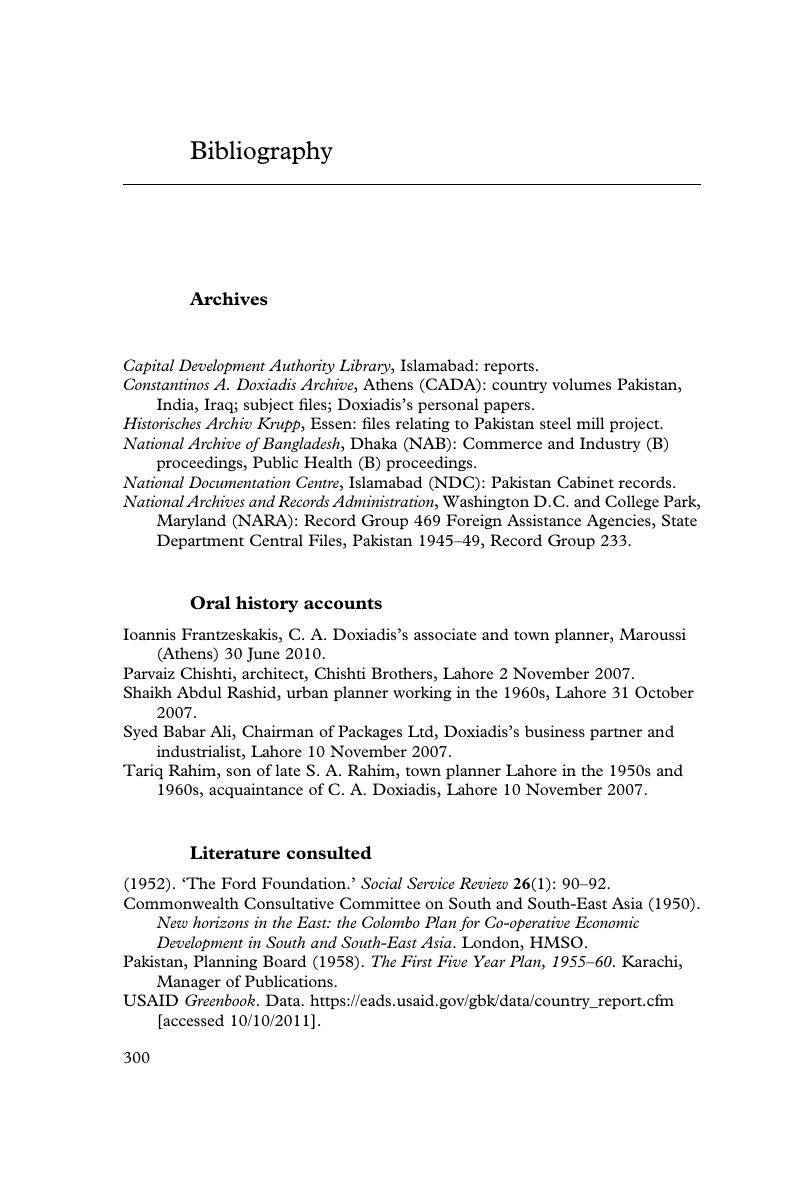Book contents
- Islamabad and the Politics of International Development in Pakistan
- Islamabad and the Politics of International Development in Pakistan
- Copyright page
- Contents
- Figures
- Book part
- Introduction
- 1 Architect of development
- 2 The consultant's gaze
- 3 From ‘great plan’ to great project
- 4 On the road to Islamabad
- 5 Planning the Muslim city of the future
- 6 The consultant under attack
- Conclusion
- Bibliography
- Index
- References
Bibliography
Published online by Cambridge University Press: 05 April 2015
- Islamabad and the Politics of International Development in Pakistan
- Islamabad and the Politics of International Development in Pakistan
- Copyright page
- Contents
- Figures
- Book part
- Introduction
- 1 Architect of development
- 2 The consultant's gaze
- 3 From ‘great plan’ to great project
- 4 On the road to Islamabad
- 5 Planning the Muslim city of the future
- 6 The consultant under attack
- Conclusion
- Bibliography
- Index
- References
Summary

- Type
- Chapter
- Information
- Publisher: Cambridge University PressPrint publication year: 2015

